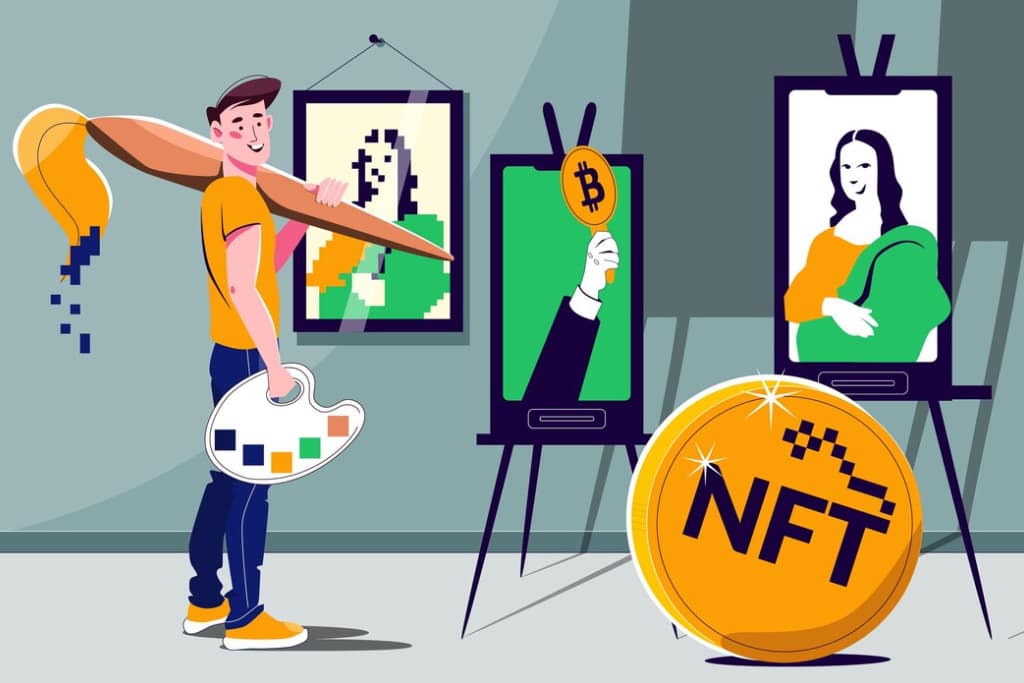Decoding Cryptocurrency: An Introduction
Many of us are intrigued by the world of cryptocurrency, a realm of finance that seems to be enveloped in enigma. The sight of Bitcoin advertisements and cryptocurrency promotions are increasingly becoming commonplace. But what exactly is this phenomenon that’s rapidly gaining traction?
At the most basic level, Bitcoin represents one type of cryptocurrency, a digital form of currency operating in a complex network of virtual assets. The world of cryptocurrency, however, extends beyond Bitcoin, featuring other popular digital currencies such as Ethereum, Dogecoin, and more.
Cryptocurrency: All About Virtual Assets
- In essence, the term cryptocurrency is a sophisticated way of referring to virtual money;
- Cryptocurrencies such as Bitcoin, Ethereum, or Dogecoin can be perceived as virtual investments carrying tradeable assets.
The distinct feature of cryptocurrency is its independence from any governmental control, enabling an unrestricted, free-flowing exchange of digital assets. According to David Gura, an NPR correspondent, the cryptocurrency market has witnessed rapid expansion, now estimated at a staggering $1.5 trillion.
Cryptography & Blockchain: The Core of Cryptocurrency
Cryptocurrencies essentially involve the exchange of digital assets in an unregulated and rapidly growing industry. The allure of garnering substantial profits continues to draw young and ambitious investors into a whirlwind of high-stakes trade.
Cryptocurrency investments are notably appealing to those who envision a future dominated by digital currencies. This belief in technology’s potential represents a path towards high returns, a pursuit particularly enticing for millennials and Gen Z.
The Dark Side of Cryptocurrency
Despite the glamour of potential high returns, the industry has been associated with risks such as fraud, theft, and even money laundering and ransomware attacks. It’s essential for potential investors to understand that because of the lack of clear regulations, investing in cryptocurrency does carry significant risks.

Investment Prospects in Cryptocurrency
Cryptocurrency investments, specifically Bitcoin and Coinbase, are increasingly viewed as exciting, profitable frontiers waiting to be discovered. However, the lack of regulation and transparency has prompted authorities like SEC Chairman Gary Gensler to insist on the need for better measures to protect investors.
Cryptocurrency Marketing Promotions: Rise of QR Codes
Marketing campaigns designed for cryptocurrencies are highly innovative. An example that stands out is Coinbase’s advertisement during the Super Bowl, where a QR code was displayed, leading viewers to a promotional offer.
The Future of Cryptocurrency
With the booming popularity of cryptocurrencies, they have been recognized as the future of the economic system. In 2021, the value of major cryptocurrencies like Bitcoin rose by 300%, reflecting an estimated worth of about $2 trillion.
Basics of Mining Cryptocurrency
Cryptocurrency mining is the process by which new bitcoins are entered into circulation and involves solving complex computational maths problems. Mining farms exist worldwide to solve these algorithms, and the miners receive a reward for their work.
Cryptocurrency is undoubtedly a game-changer in the financial world, offering a new way of conducting transactions and creating wealth. However, potential investors should understand the risks associated, and exercise caution and due diligence before diving into the world of digital currencies. Within the exploration what the hell is Cryptocurrency it’s crucial to address the risks associated with hot wallets, shedding light on potential vulnerabilities and enhancing readers’ understanding of secure cryptocurrency practices.
Key Facts to Know about Cryptocurrencies

- Cryptocurrency is a completely digital asset that uses cryptography for secure transactions;
- Prominent cryptocurrencies include Bitcoin, Ripple, and Ethereum. Each has unique characteristics and market values;
- Cryptocurrencies are acquired through a process known as mining, where powerful computers solve complex equations;
- Cryptography is the backbone of cryptocurrency, securing transactions and ensuring their validity;
- Blockchain, a reliable distributed ledger, is used to keep track of all transactions;
- The finite number of coins in the cryptocurrency market is what gives them their value;
- Cryptocurrencies aim to make currency independent of government control in the long run;
- Mining for Bitcoin requires specific hardware;
- The price of Bitcoin increased by 1,500% in 2017, highlighting the volatility and potential value of cryptocurrencies;
- Investing in Bitcoin and other cryptocurrencies can be risky due to the extreme volatility in their value.
Conclusion
The world of cryptocurrency, led by pioneers like Bitcoin, Ethereum, and Dogecoin, is intriguing, holds a promise of high returns, and is reshaping our understanding of currencies. While its decentralization offers a break from conventional banking systems and government control, it comes with a substantial risk due to its volatile nature and regulatory ambiguity. As we stand on the brink of this digital revolution, it’s crucial to navigate this landscape with caution, informed decision-making, and a clear understanding of both the opportunities and challenges that cryptocurrencies bring. With all its complexity and promise, cryptocurrency indeed paints an exciting and unpredictable picture of the future of finance.




